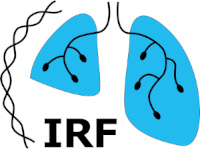- Index
- >Research topics
- >Axis 1 : Clinical-biological monitoring
- >Theme 1: Epidemiology
Epidemiology
The epidemiology of respiratory fungal infections in cystic fibrosis is one of our major concerns.
Our unit has reported the relatively high frequency of S. apiospermum and, to a lesser extent, A. terreus in this clinical context, data that have now been confirmed in numerous studies carried out in Europe, the USA and Australia; the ability of other aspergillary species such as A. lentulus or Neosartorya pseudofischeri to chronically colonize patients' respiratory tracts; or more recently, the emergence of certain thermophilic species such as Rasamsonia argillacea, R. brevistipitata and R. aegroticola. Nevertheless, probably in connection with climatic changes, we are seeing a change in the range of fungal species isolated, with the emergence of new species. We therefore remain focused on the detection of emerging fungal species, for which we need to determine frequency, antifungal susceptibility and clinical consequences.
Identifying risk factors for chronic mold colonization of the respiratory tract, as well as for sensitization or respiratory infections, remains another of our objectives.
At the same time, although the clinical repercussions of fungal colonization of the airways remain controversial, it seems increasingly clear that it contributes to the inflammatory response and thus to the progressive deterioration of respiratory function, at least when chronic. The development of rapid and reliable typing methods is still needed to differentiate between recurrent but transient carriage and true chronic colonization, which is the aim of Abdelmounaim Mouhajir's thesis.
The prevalence of pulmonary colonization by P. jirovecii, an opportunistic fungus, in these patients varies from region to region (21.6% in Seville vs. 7.4% in Munich and 1.3% in Brest). Current data need to be supplemented by multicenter studies on larger patient cohorts, particularly those from the greater western region. The high prevalence of primary infection with P. jirovecii, a transmissible fungus (60-100% before the age of 4), suggests that infants represent a vast reservoir. A multi-center project funded by the European Union [Common Agricultural Policy Regionalised impact (CAPRI), ERA-Net LAC, CAPRI-PC HID -0254] is investigating the primary infection and potential excretion of P. jirovecii by infants in their environment. Similarly, the circulation of P. jirovecii between the respiratory tracts of all infected populations and their surrounding air environment needs to be explored. In this context, genotypic identification is essential, particularly for the investigation of nosocomial and community-acquired infections.


